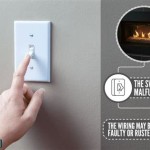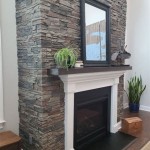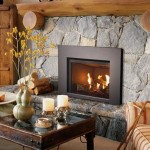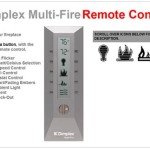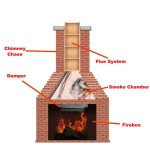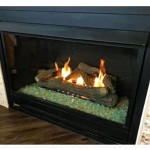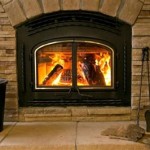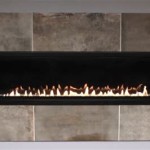Direct Vent Gas Fireplace Venting Requirements
Direct vent gas fireplaces offer a convenient and efficient way to heat a space, but proper venting is crucial for their safe and effective operation. Unlike traditional fireplaces, which require a chimney, direct vent fireplaces use a sealed system that vents combustion gases directly outdoors. This article will delve into the essential venting requirements for direct vent gas fireplaces, exploring key considerations for installation and maintenance.
Understanding Direct Vent Gas Fireplace Venting
Direct vent gas fireplaces rely on a dedicated venting system that runs from the fireplace to the exterior of the house. This system typically consists of two concentric pipes, one for the intake of fresh air and the other for the exhaust of combustion byproducts. The outer pipe provides fresh air to the fireplace, while the inner pipe carries the exhaust gases outside. The vent pipe is often made of stainless steel, aluminum, or other materials that can withstand the heat produced by the fireplace.
The venting system plays a vital role in ensuring the safety and efficiency of direct vent gas fireplaces. By expelling combustion gases outdoors, it prevents carbon monoxide buildup inside the house. Additionally, proper venting ensures adequate airflow, which is essential for maintaining efficient combustion and optimal heat output from the fireplace.
Key Venting Requirements for Direct Vent Gas Fireplaces
Several essential venting requirements must be met to ensure the safe and efficient operation of direct vent gas fireplaces. These requirements are typically outlined in building codes and manufacturer's instructions, and it's crucial to adhere to them for proper installation and maintenance.
1. Vent Pipe Size and Material
The size and material of the vent pipe will depend on the specific fireplace model and the distance between the fireplace and the exterior wall vent. Manufacturers provide detailed specifications in their installation manuals, which should be consulted carefully. Generally, vent pipes are made of durable materials like stainless steel or aluminum, chosen for their resistance to heat and corrosion. The pipe diameter must be adequate to accommodate the volume of gases generated during combustion, preventing any blockage or restriction.
2. Vent Termination and Clearance Requirements
The termination of the vent pipe outside the house is crucial for safe and effective venting. The vent must be properly terminated according to local building codes and manufacturer's instructions. This typically involves extending the pipe several inches above the roofline and positioning it at a safe distance from combustible materials. The clearance requirements between the vent termination and nearby structures or materials are essential to prevent heat damage or fire hazards.
3. Vent Pipe Routing and Support
The routing of the vent pipe through the walls and attic should be carefully planned and executed. The pipe must be routed in a straight path, avoiding any sharp bends or kinks that can restrict airflow. Proper support is also essential to prevent sagging or movement of the vent pipe, ensuring stability and preventing leaks or damage. Vent pipes are typically attached to walls or ceilings using brackets or clips designed for this purpose. Securely installed vents minimize the risks of dislodgement or damage.
4. Regular Inspection and Maintenance
Regular inspections and maintenance of the vent system are essential to ensure its proper functioning. It's recommended to have a qualified technician inspect the vent system annually, checking for any signs of damage, corrosion, or buildup. Cleaning the vent pipe to remove any debris or blockages is also critical for optimal performance. Maintaining a clean and unobstructed vent system ensures the safe and efficient operation of the fireplace, preventing potential hazards and maximizing its efficiency.
5. Code Compliance and Permits
Before installing a direct vent gas fireplace, it's crucial to consult local building codes and obtain any necessary permits. Building codes often specify requirements for venting systems, including vent pipe size, material, termination, and clearance. Obtaining permits ensures the installation meets the standards and safety requirements, preventing any potential legal issues or fines.
Understanding and adhering to the venting requirements for direct vent gas fireplaces is crucial for safety, efficiency, and longevity. Properly installed and maintained venting systems effectively remove combustion gases, ensuring clean air indoors and optimal fireplace performance. Consult your manufacturer's instructions and local building codes for precise specifications and requirements, ensuring a safe and enjoyable fireplace experience.
Gas Fireplace Venting Explained Heatilator

What Are The Best Ways To Vent A Gas Fireplace Zoroast
Gas Fireplace Venting Explained Heat Glo
Gas Fireplace Venting Explained Heat Glo

Vented Vs B Vent Direct Free Dixie S

What Is A Direct Vent Fireplace Fireplaces Learning Center

Benefits Of Direct Vent Fireplaces
.aspx?strip=all)
Benefits Of Direct Vent Fireplaces Regency Fireplace S

Gas Fireplaces Direct Vent Vs Free Fine Homebuilding

What Are The Best Ways To Vent A Gas Fireplace Zoroast
Related Posts

